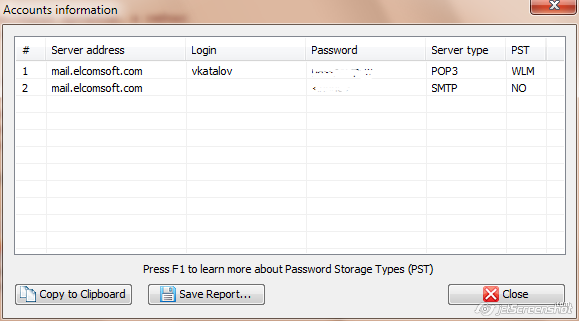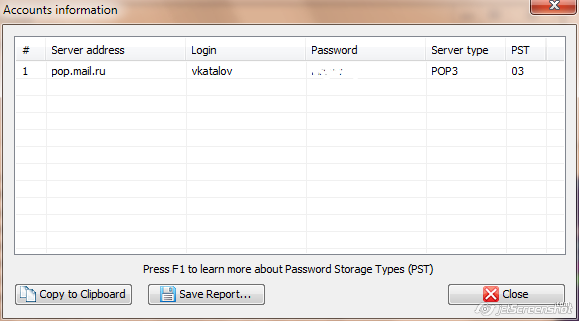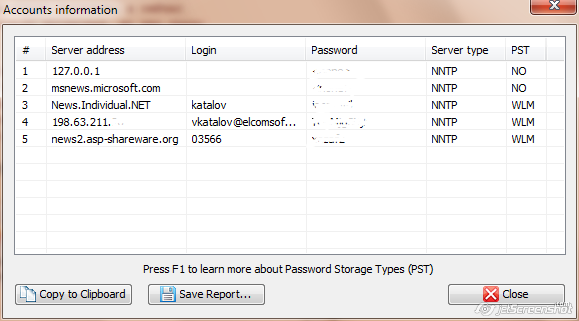There are three mail and news related buttons on the toolbar:
•Mail accounts (Outlook Express, Windows Mail and Windows Live Mail, Outlook)
•News accounts (Outlook Express, Windows Mail and Windows Live Mail)
•Identities (outlook Express)
Mail accounts
For every mail and news account, EINPB shows the server address, login and password; usually, the last two fields are shown as <none> for news, which means that no login/password is required to connect to the given server. In addition, the program shows the server type (NNTP for news accounts; POP3, IMAP4, HTTP and SMTP for mail accounts) and Password Storage Type. For Outlook Express and Windows [Live] Mail:

For Outlook 98, 2000, 2002/XP, 2003, 2007, 2010 and 2013 (Outlook 97 is not officially supported, but may still work), you can also recover information about email accounts (server address, login, password and server type) stored in Outlook. Press Outlook Accounts on the toolbar. If Outlook is installed and has at least one email account, EINPB will open a new window with appropriate fields. From there, for any account you can copy password to Clipboard by pressing the appropriate button at the bottom:

In addition, the program shows the server type (POP3, IMAP4, SMTP or HTTP) and Password Storage Type.
News accounts

Identities
For Identities, EINPB shows the list of name and password combinations.
All information shown by EINPB (address, login password) can be save into a text file with the Save Report button.
If you experience a problem when trying to get passwords for mail, news or identities, you can use the debug mode. To enable the debug mode, select Options | Settings from the menu, check Enable logging, and select path to the log file. Attempt to recover the passwords again, and send us that log file. The log does not contain passwords or any personally identifiable information.